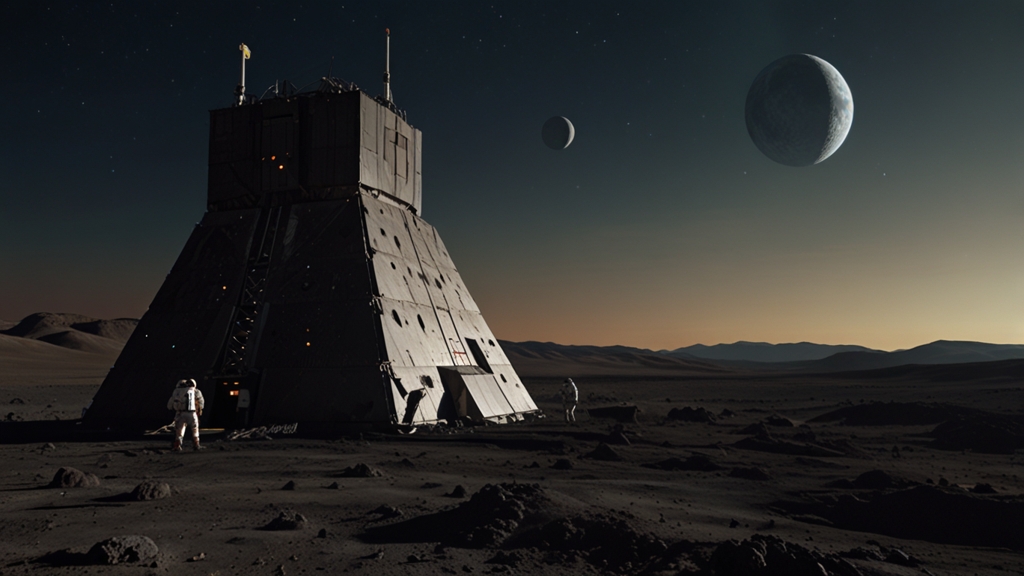Exploring the Dark Side of the Moon: New Missions That Will Change Our View
The 'dark side of the moon' has long captivated the imagination of scientists, astronomers, and the general public alike. For decades, this mysterious region, perpetually turned away from Earth's gaze, has inspired countless theories and speculations. With new missions on the horizon, we stand on the brink of unprecedented discoveries that could forever change our understanding of the Moon and its many secrets.
The Allure of the Far Side
Technically referred to as the 'far side of the moon,' this hemisphere is not perpetually dark, as the term suggests. Instead, it experiences day and night cycles just like the near side. What makes it particularly challenging to study is its constant orientation away from Earth, making direct observation and communication difficult with traditional methods.
The Apollo missions of the late 1960s and early 1970s provided humanity's first close-up glimpses of this enigmatic region. However, it wasn't until January 2019, when China's Chang'e-4 mission successfully soft-landed on the far side, that we began to scratch the surface of its many mysteries.
Upcoming Missions and Their Significance
Several ambitious missions are scheduled to launch in the coming years, each with the potential to revolutionize our understanding of the Moon's far side. NASA, in collaboration with international partners, is planning the Artemis missions, while other space agencies and private companies are also gearing up for their own expeditions.
NASA's Artemis Program
The Artemis program aims to return humans to the Moon and establish a sustainable presence by the end of the decade. Artemis III, in particular, plans to land astronauts on the lunar south pole, an area that includes portions of the far side. This mission could yield insights into the lunar surface's composition, water ice deposits, and potential resources for future missions.
"By harnessing the technology and expertise of our global partners, Artemis will bring us closer to unraveling the Moon's many secrets, including those hidden on its far side." - NASA Administrator
China's Lunar Ambitions
Building on the success of Chang'e-4, China's space administration plans to launch more missions to the far side, focusing on both robotic and potentially crewed landings. These missions will aim to conduct geological studies, sample returns, and in-situ resource utilization experiments, all of which are crucial for potential long-term lunar habitation.
Private Enterprises and Their Role
Private companies like SpaceX and Blue Origin are also stepping into the lunar exploration arena. Collaborating with NASA and other space agencies, these companies aim to develop new technologies and infrastructures to support lunar missions. Their efforts could accelerate the pace of discovery and bring a diverse range of scientific instruments and experiments to the far side.
"Private industry has a crucial role to play in ensuring sustainable lunar exploration, making it more accessible and cost-effective." - SpaceX CEO
Technological Innovations
Advancements in technology are pivotal for the success of these missions. Innovations such as autonomous rovers, lunar habitats, and advanced communication systems will make it feasible to conduct extended missions on the far side. These technologies will enable scientists to gather high-resolution data and conduct real-time experiments, ultimately enriching our understanding of the Moon's geology and environment.
The Implications of Exploration
Exploring the far side of the Moon is not merely an academic exercise; it has profound implications for future space exploration and our understanding of the universe. The data collected from these missions could inform the planning of crewed missions to Mars and beyond. Additionally, the discovery of resources such as water ice could pave the way for sustainable lunar bases, serving as a launchpad for deeper space missions.
"Exploration of the Moon's far side holds the potential to unlock new scientific knowledge and technological capabilities, benefiting all of humanity." - Lunar Scientist
Conclusion
The dark side of the Moon remains one of the last great frontiers in our solar system. With multiple missions on the horizon, we are poised to uncover its secrets and, in the process, gain valuable insights that could shape the future of space exploration. As we stand on the cusp of these groundbreaking discoveries, one thing is clear: the Moon's far side is about to come into the light, forever altering our view of our nearest celestial neighbor.






